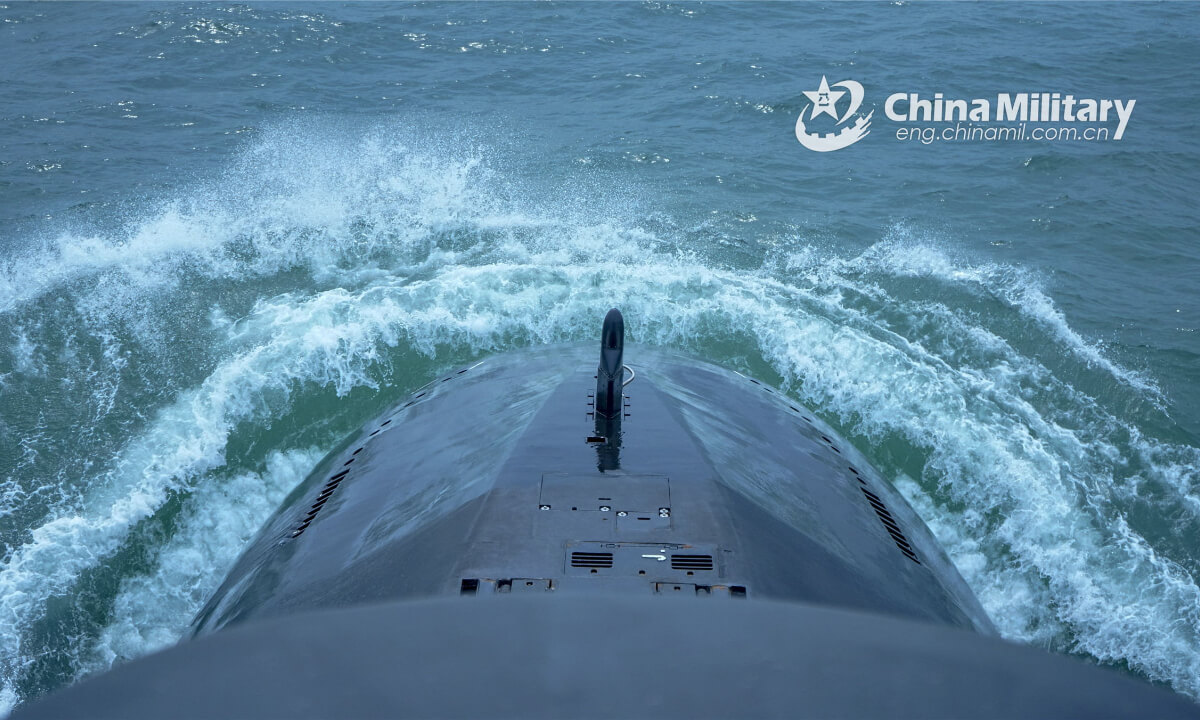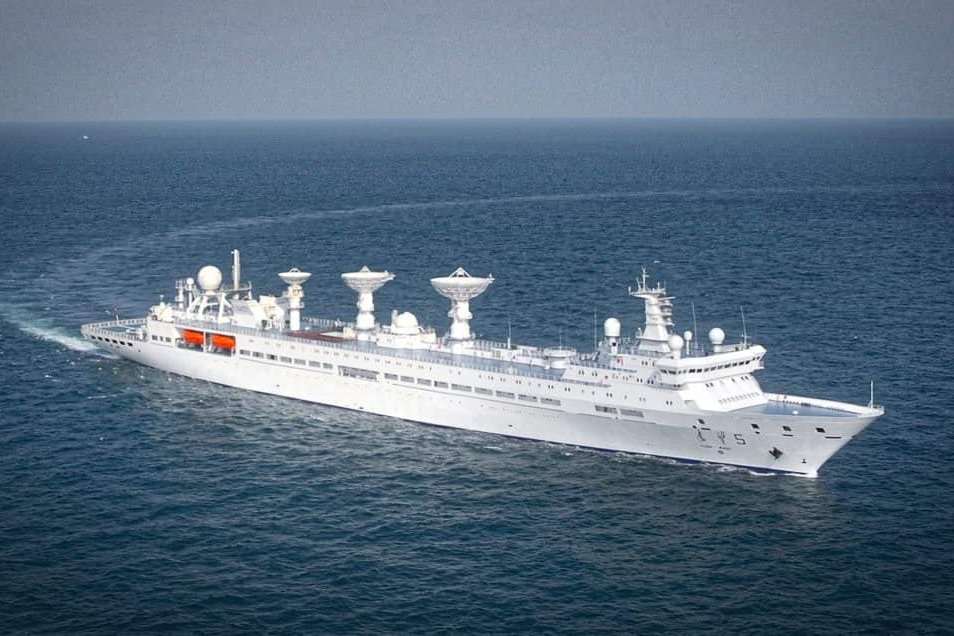A few days after the PLA Navy marked ten years of its first aircraft carrier Liaoning, a Chinese security officer & military expert said that India should be ready for the PLA carrier battle group that would be sailing in the Indian Ocean very soon.
These comments could cause deep tremors in New Delhi, which is already alarmed by Chinese antics at the Line of Actual Control (LAC).
Zhou Bo, a senior fellow at Tsinghua University’s Centre for International Security and Strategy, stated that despite the Himalayan conflict that “cannot be resolved in the foreseeable future,” New Delhi shouldn’t view Beijing as a threat to its interests in the Indian Ocean.
Speaking at a King’s College seminar, Zhou further argued that India must understand that Chinese naval activity in the Indian Ocean will increase in frequency.
“To safeguard China’s growing interests in the Indian Ocean and maintain the security of strategic sea lanes, the Chinese Navy must maintain or even strengthen its presence in the Indian Ocean,” he said.
“It is only a matter of time before a Chinese carrier strike group appears in the Indian Ocean.” If New Delhi views the Indian Ocean as the “Great Ocean for Hindus” or India as the “Net Security Provider” for the Indian Ocean, friction and even violence between the two sides are likely, Zhou said.

These statements are in stark contrast with the Chinese position that its Navy is only used to protect its national sovereignty, unlike the US Navy, which uses its carrier battle groups for achieving “world hegemony.”
Earlier, Chinese state-run Global Times had stated that its newest carrier Fujian would only be deployed in the Korean Peninsula, the Taiwan Straits, and the South China Sea.
Besides hinting at PLAN’s enhanced presence in the Indian Ocean Region, especially by its carrier battle group deployment, Zhou pitted the United States against India. According to the Chinese military strategist, the United States, not China, is the true threat to India’s rights and interests in the Indian Ocean.
He cited the USS John Paul Jones guided missile destroyer passage into the waters that India claimed as its exclusive economic zone last year. These comments come when India is going through heartburn at the US decision to provide F-16 maintenance support to its arch-enemy Pakistan.
USS John Paul Jones (DDG 53) asserted navigational rights and freedoms approximately 130 nautical miles west of the Lakshadweep Islands, inside India’s exclusive economic zone, without requesting India’s prior consent, consistent with international law: US Navy
— ANI (@ANI) April 9, 2021
Jabin T Jacob, Associate Professor in the Department of International Relations and Governance Studies, Shiv Nadar University, told EurAsian Times, “The Chinese arguments follow a common pattern – play up differences between India and the US, including recent ones on issues related to Russia, stressing that China and India share common interests and at the same time try to socialize India into accepting China’s presence and dominance in the Indian Ocean.
However, India will perceive China as a threat to Indian interests given the record and refuse to accept any Chinese dominance of the IOR. At the same time, it is also essential for New Delhi and other members of the Quad to now reconsider their approach of not having an explicitly military focus against China. Lack of clarity hurts the Quad’s ability to deal effectively with the Chinese threat.”
The Chinese military strategist further urged his country’s Asian neighbor to manage their disagreements better and stabilize relations and that the relationship could suffer dire consequences if mismanaged. “If left to fate, such an attitude is irresponsible and can also push China-India relations in a deleterious direction,” said Jacob.
These comments are significant for the policymakers in India and the Indian Navy, which has embarked on a new journey that could entail future engagements and even a stand-off with China as the dispute between the two sides shifts from the mountain to the sea.
China’s Carrier Battle Group Entry Into The IOR
Earlier, EurAsian Times had analyzed the works of Chinese strategists and specialists on China’s plans for developing a modern fleet and their potential application in the Indian Ocean Region (IOR). In essence, they support a protectionist and non-interventionist approach focused primarily on defending its sea lines of communication (SLOCS).
According to a previous analysis, there have been hints of a tough stance toward dealing with the US and India. However, nothing to suggest an aggressive stance that may endanger the core of Indian security from the sea.
However, a carrier battle group in the IOR may depart from this position.
Further, Zhuo’s assertion that India must not try to assume the role of a “net security provider” in the region indicates that there could be a challenge to the status quo in the IOR, as well as to India’s policy objectives in the region that it regards as its backyard.
A glimpse of that has been visible with a Chinese spy ship Yuan Wang 5 docking at Sri Lanka in August.

According to Ye Hailin, Vice-President of the Institute of Asia Pacific and Global Strategy in the Chinese Academy of Social Sciences (CASS), China has never considered India as the key concern; whether it is a partner or an opponent, it is always on a secondary level.
The PLAN is already far bigger than the Indian Navy and is expanding rapidly because it is reorienting and growing to challenge the US Navy.
Beijing might use excessive maritime power against the IOR in the short term. The logistical difficulties of conducting operations in the IOR will be significantly reduced by the presence of an overtly military facility in Djibouti and proximity to numerous Belt and Road Initiative (BRI) ports.
It is important to note that China already has about 15 frontline replenishment ships. The PLAN’s ability to undertake out-of-area operations is no longer as constrained with the Y-20 strategic airlifter in service, quickly rising numbers.
Further, it has three aircraft carriers in its inventories with state-of-the-art vessels like the Type 054 and the Type 055 in its inventory.
Srikanth Kondapalli, a professor in Chinese Studies, Centre for East Asian Studies, Jawaharlal Nehru University, New Delhi, decoded the comments for EurAsian Times.

According to Kondapalli, “The Chinese argument for India is that the latter should not go with the United States, but if you put things in perspective, India does not have a dispute with the US except for marginal yet manageable issues.
On the contrary, Chinese troops killed 20 Indian soldiers in Galwan not too long ago. China is essentially taking the same line as the US when it says it wants to expand its presence to protect the Sea Lines of Communication (SLOCS).
With PLAN in the IOR, it is an entirely different ballgame because there’s an active dispute and rivalry between India and China. It is, in fact, provocative for China to sail its carrier in the Indian Ocean waters.
“Chinese surveillance ships have been mapping the Bay of Bengal (BoB) and trying to mine the area for minerals. With India’s expanding economic growth needs, the prospect of having China mine these minerals from its maritime backyard would be seen as a threat.
The US does sail these waters, but like China, it is not putting pressure on Sri Lanka or the Maldives to grab islands or on Pakistan and Bangladesh to take their ports to balance India. The real challenge to India can never be the United States despite their differences, and there’s absolutely no comparison between Chinese and US presence in the IOR.”
The Western Pacific and the Northern Indian Ocean (from the Middle East and East Africa to the Strait of Malacca) are identified as the core zones for the PLAN.
The PLAN will not challenge the Quad nations in this area as it can only spare three to four ships in the northern IOR and is engaged in an “away game” with inadequate logistical support.
However, with the expansion that the PLAN is undertaking now and going by the statements made by an influential military strategist, this could be in for a significant change.
- Contact the author at sakshi.tiwari9555@gmail.com
- Follow EurAsian Times on Google News




